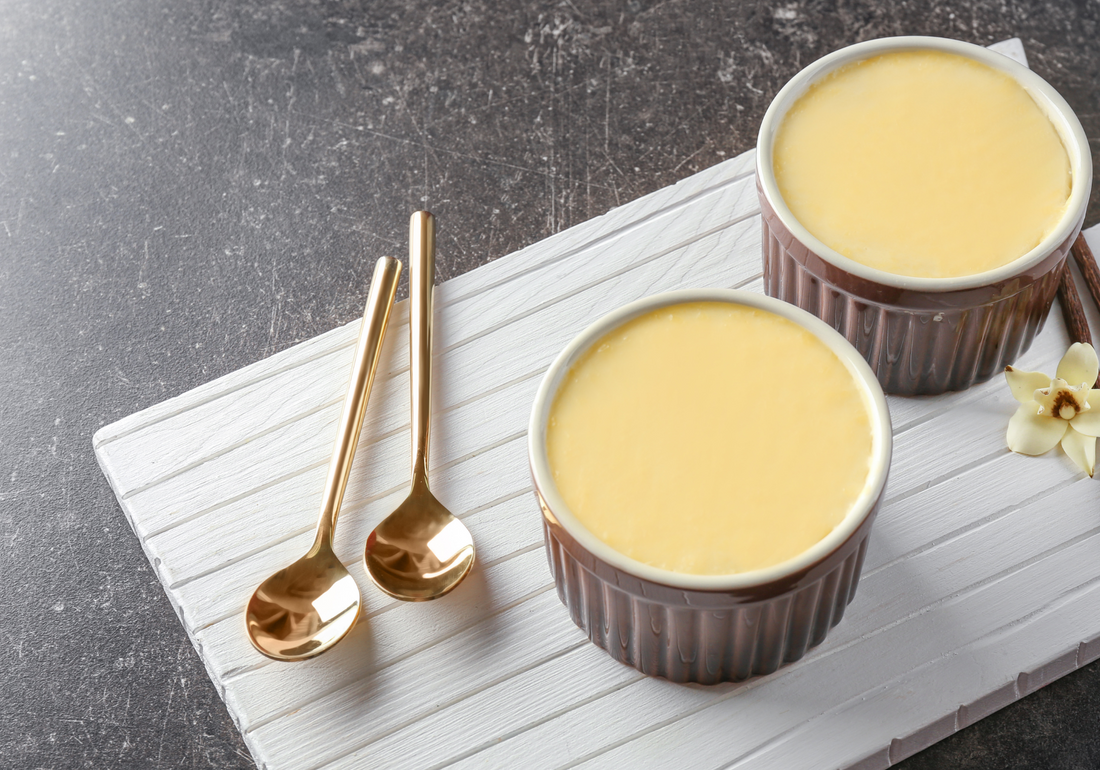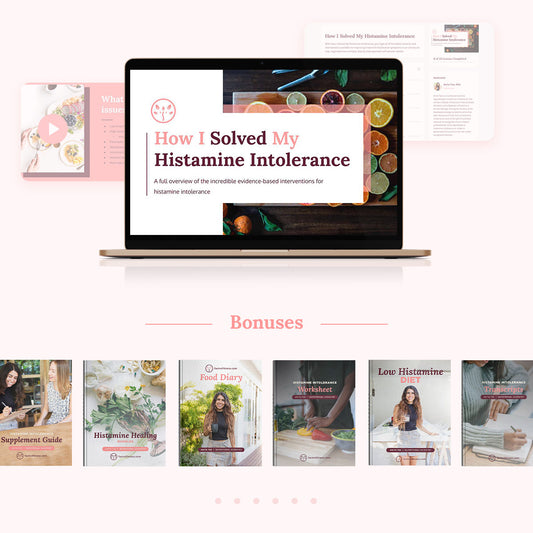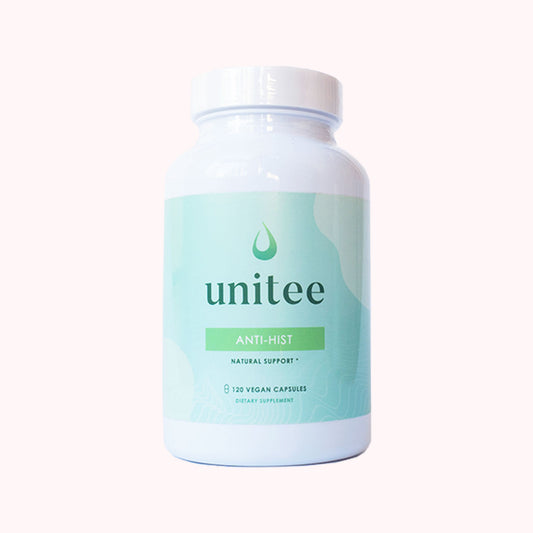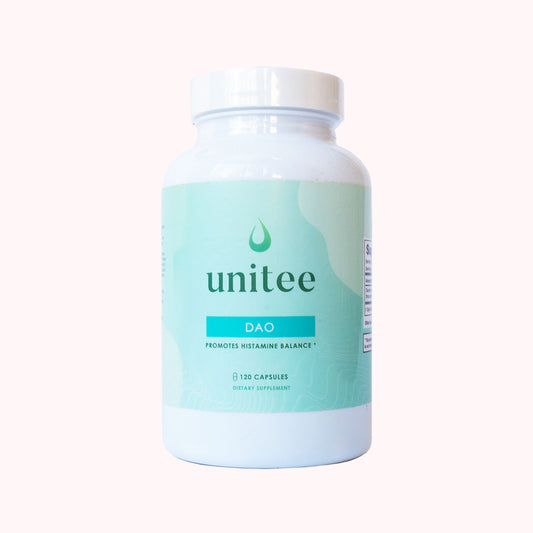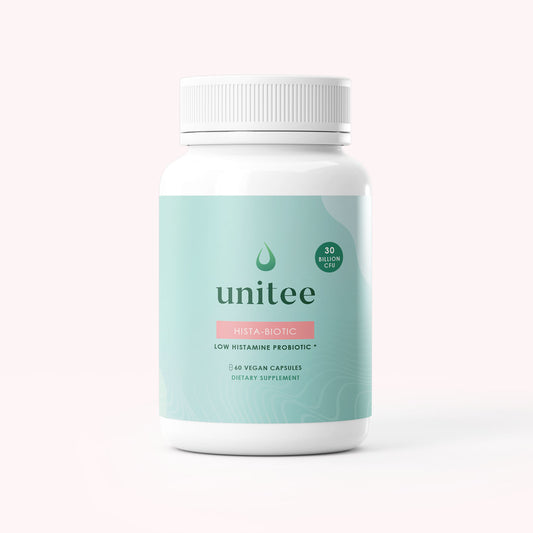Pumpkin is such a staple for the holidays!
But pumpkin-flavored holiday favorites are generally loaded with ingredients that are a big no-no when it comes to histamine intolerance. So here, I have a delightful pumpkin mousse recipe for you to try, that’s packed with low-histamine ingredients, to get you in the mood for the holidays.
I know you're ready for to dive into the recipe right away, but first, let's check out the breakdown of why I've chosen the specific ingredients and how they can help your histamine intolerance symptoms.
Low Histamine Pumpkin Mousse Dessert Recipe: Ingredients Breakdown
Maple Syrup: While sugar itself is not technically high in histamine, refined sugars can create a great deal of inflammation in the body, especially when consumed in high amounts. It’s this inflammation that can continue to trigger your histamine intolerance symptoms, which is why we want to generally avoid eating too much sugar when dealing with histamine intolerance (1).
Additionally, when your blood sugar is dysregulated, more histamine is released by the body, so it’s important to limit your intake of sugar overall.
Of course, you’re well aware of the fact that both maple syrup and honey are sugar! The benefits of them in this recipe is that they’re unrefined, have health boosting properties - especially honey - and are used in a very limited amount.
That’s why sweetening with maple syrup or raw, local honey are excellent options for keeping things low-histamine. Additionally, the use of local honey has shown to help in taming histamine symptoms.
Vanilla: Who doesn't love vanilla? Did you know that vanilla even tricks the taste buds into thinking a dessert is sweeter than it actually is! Just a small amount will do the trick - but, keep in mind that typical vanilla extracts contain alcohol, which can destabilize mast cells and produce histamine symptoms. Grabbing an alcohol-free vanilla from your local health food store, and even though it may cost a little more, is a great investment as vanilla lasts a long time due to the very small amounts necessary in recipes.
Because vanilla gives that illusion of being sweet, you can use it in your herbal tea and other recipes, too!
Coconut milk: Keeping this recipe dairy-free with coconut milk will also help to prevent symptoms, as dairy can encourage digestive distress, and may even destabilize mast cells (2). Additionally, coconut provides a healthy dose of fats, which can help to maintain a healthy blood sugar balance.
Often, people with food intolerances like histamine intolerance, struggle to break down fats. And while we recommend more of a moderate fat intake while following a low histamine diet because of it, coconut milk and its higher fat content hit a little differently. Because coconut milk is largely made up of medium chain triglycerides, it doesn’t need bile acids to break down. So it’s processed in a different way, which means that the usual feeling of fullness and nausea that could come with eating high-fat foods, isn’t likely to happen when using coconut milk.
Ginger: Ginger is actually an anti-histamine food and can reduce histamine intolerance symptoms. Ginger also contains a wide range of nutrients that support overall health, particularly relating to their anti-inflammatory and antioxidant properties. Ginger has also been found to possess properties that regulate the immune system (3) and promote antiallergic pathways to become active in the body. In fact, research shows that ginger is just as effective as a pharmaceutical drug taken to improve the nasal symptoms associated with chronic allergies!
Keep in mind it does contain salicylate, which some histamine intolerant individuals may be sensitive to. If you are also sensitive to salicylates, simply omit ginger from the recipe. Remember, fresh is always best when it comes to using herbs and spices - so aim for fresh ginger in this recipe!
As you can see, I've done my research on this low histamine pumpkin mousse recipe! For a full list of the best foods to eat for histamine intolerance and other strategies to reduce symptoms, download my guide to histamine intolerance which also contains a comprehensive histamine intolerance foods list.
Low Histamine Dessert Pumpkin Coconut Mousse Recipe
Ingredients:
- 2 cups of pumpkin, roasted and pureed (you can also use butternut squash if you prefer)
- ⅓ cup maple syrup/raw, local honey
- 1 tsp. vanilla extract (alcohol-free)
- ¼ tsp. fresh ginger, micro-planed
- 1 can full fat coconut milk
Directions:
- The night before you go to make this, place an unopened can of coconut milk in the fridge.
- The next morning, open the can and scoop out the solid white part and place it in the mixture.
- Using a hand mixer, whip the coconut into a whipped cream.
- Next, make the pumpkin mixture - In another bowl, combine the pumpkin puree, ginger and maple syrup and mix well.
- Gently fold the whipped coconut cream it into the pumpkin mixture.
- Chill in the fridge until it is ready to be eaten.
Want more unique low histamine recipes? Check out my Low Histamine Cookbook Bundle with 170 nutritionist-approved recipes.
References:
- Sgambellone S, Marri S, Masini E, Lucarini L. New Insight in Histamine Functions. Biomolecules. 2022; 12(5):609. https://doi.org/10.3390/biom12050609
- Moniente M, García-Gonzalo D, Ontañón I, Pagán R, Botello-Morte L. Histamine accumulation in dairy products: Microbial causes, techniques for the detection of histamine-producing microbiota, and potential solutions. Compr Rev Food Sci Food Saf. 2021; 20: 1481–1523. https://doi.org/10.1111/1541-4337.12704
- Lalruatfela B., Lalthanpu, ii P., Lalrinmawia C., Lalchhandama K. Immunomodulatory and Antiallergic Potentials of the Bioactive Compounds of Ginger. Pharmacognosy Journal. 2023;15(6):1166-1176.
- Yamprasert, R., Chanvimalueng, W., Mukkasombut, N. et al. Ginger extract versus Loratadine in the treatment of allergic rhinitis: a randomized controlled trial. BMC Complement Med Ther 20, 119 (2020). https://doi.org/10.1186/s12906-020-2875-z

Anita Tee
My name is Anita Tee. I'm a nutritional scientist who specializes in histamine intolerance. I hold a Master of Science in Personalized Nutrition and a Bachelor of Science in Human Biology and Psychology. For the past ten years, I have used my experience in nutritional and medical health sciences to create a scientifically backed, natural approach to healthcare that relies 100% on evidence-based research. As I previously suffered from - and overcame - histamine intolerance, my focus is to increase recognition and expand the available resources and protocols available for resolving this particular disorder. To date, I have helped over 4,000 individuals fully resolve or better manage their histamine intolerance symptoms.

